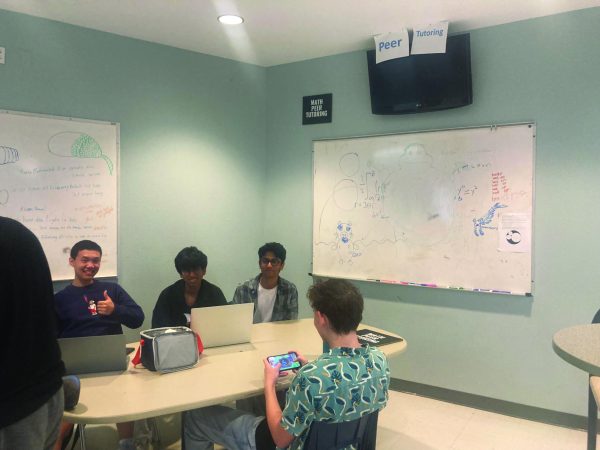IN-DEPTH: Stand Up, Fight Back: Black Lives Matter: What Happened, What Didn’t, and What Needs to
May 28, 2021
In the past two years, America has undergone a series of events that opened many people’s eyes to what was happening around them. As a result, the Black Lives Matter (BLM) movement was propelled to national attention.
Since 2013, the BLM movement has been gathering support from citizens all across America after the murder of Treyvon Martin in 2012. Founders Alicia Garza, Patrisse Cullors and Opal Tometi started the movement in response to the growing concern of racially motivated police brutality. On May 25, 2020, George Floyd was murdered by a Minneapolis police officer, which then sparked a wave of protests, riots and speeches by outraged Black people and their allies. Over the next few months, the movement would only continue to grow as more instances of police brutality would surface with little to no action taken by governments to hold the officers responsible accountable. Today, the BLM movement has spread all over the country from the streets of Los Angeles, California, to the sidewalks of Washington, D.C., and has even reached communities around the world, including protests in the United Kingdom and South Korea. The movement has been an important topic for students at LASA recently, especially for Black students. Sophomore Kayla Lassiter explained how the BLM movement directly impacted her and how it relates to her personal experiences.
“As a Black person, the things that are going on right now in the Black Lives Matter movement can very well affect me,” Lassiter said. “And I’m not a stranger to racism. I’ve experienced it before. It was unfortunate, and it was also a very scary thing to endure.”
In the past year, the movement has gained a lot of attention, with an estimated 26 million people protesting, according to the Kaiser Family Foundation. Lassiter believes that the country-wide shutdown allowed people who might not have previously had the opportunity or time to show their support to actively participate in the movement.
“A lot of people at the time were working from home. They had the opportunity to go outside and protest,” Lassiter said. “So that might have helped it gain a lot of traction online. And since a lot of kids were out of school, they could also participate in spreading information via the internet, like TikTok and Instagram.”
After Floyd’s death was publicized, more instances of police brutality surfaced, including the murders of Ahmaud Arbery, Jacob Blake and Daunte Wright. According to sophomore Hana Hussaini, it was extremely frustrating and disappointing to see so many more murders take place despite supporters’ efforts.
“It gets kind of exhausting for me, looking through my phone and seeing all of these murders on my feed,” Hussaini said. “But just because something is uncomfortable or hard doesn’t mean we stop talking about it after like a month.”
Hussaini and Lassiter both agreed that technology and social media have been crucial in the spread of information about BLM and how people can help. According to Lassiter, compared to the ’60s, when there were relatively limited means of communication, today’s activism has been elevated by ever-improving technology.
“I think it’s really different because you have access to technology,” Lassiter said. “People in the ’60s could send out flyers, talk about it and stuff. But I think it’s much more impactful if you have internet access because that’s how the Black Lives Matter movement gained a lot of attention on the world stage.”
Sophomore activist Jaxie Niles Arguello also mentioned how important social media is not only in sharing information, but also in providing students the chance to connect with prominent BLM activists. She explained how she had recently been checking out Black content creators and supporting their work while also listening to their opinions and views on the world.
“Diversifying the media I consume opens up my life to so many new perspectives and stories I didn’t even know I was missing,” Niles Arguello said.
As the movement has brought to light harsh truths about police brutality, students at LASA have been able to develop their own thoughts and beliefs regarding the politics of the situation. Students like sophomore Oscar Thompson have used the movement as an opportunity to voice their opinions and hone in their passion about what they believe in.
“The Black Lives Matter movement, in conjunction with all the other stuff that’s been going on this year, has made me more outspoken as a liberal,” Thompson said. “I have political views but before, I was pretty passive about it. Now, they are a lot more nuanced because of this recent rise in political tensions. I’ve found myself becoming more political.”
Similar to Thompson, the BLM movement helped Lassiter to face what was going on around her.
She mentioned how she had previously been less aware about the tensions that had been rising between the Black community and law enforcement.
“I gotta be honest, I wasn’t really that into what was going on in the Black community or what was going on in the world, really, politically,” Lassiter said. “So I think it might have impacted me by really making me look into what’s happening right now and what kind of oppression is still being faced by minorities.”
Hussaini explained how she found it difficult growing up in a country divided by race and ethnicity and how she never understood white privilege. Niles Arguello also talked about her experience with racial bias and how the BLM movement has changed her view of the world.
“In the short term, it has certainly impacted how I navigate the world,” Niles Arguello said. “It is hard to see how white-centered your world is when that is all you know. Now, when I look at the world, I can question why things are the way they are and the privileges I have.”
According to the New York Times, Generation Z is more open to changing its ideals than older generations, which has proven to be a substantial benefit for the BLM movement. Hussaini, among other students at LASA, believes that Generation Z should be involved in the Black Lives Matter movement because it will directly affect its future.
“I think that Gen Z and millennials really should be at the top of this,” Hussaini said. “I feel like they are already the generation that is focused on fixing these things, but I think that we should make sure that the focus stays Gen Z and millennials. Obviously, we want all of the generations to learn about this movement and try and stop it, but I think that it would be really effective if Gen Z really hopped on that bandwagon and said, ‘Hey, we are going to make changes.’”
While the BLM movement has been able to bring attention to the issue with law enforcement, Lassiter believes that there is still much to do. She has hopes for the future of the movement but sometimes finds it difficult to imagine the end to police brutality.
“I mean, I’m hopeful that it can change things,” Lassiter said. “Honestly, it’s a little hard because somewhere deep down, I think many of us who believe in the Black Lives Matter movement want it to be this thing that will fix everything that’s going on. Not just police brutality, but other things that contribute to racism. I appreciate what they’re doing, but I don’t think that this is going to end everything.”
For Hussaini and other supporters and activists, it is hard to determine and put into practice genuine efforts that will help change the course of racism in America. According to her, an issue that has been affecting a country for so long will not change overnight, but with the help of laws and the support of Congress, she believes that there can be a safer world for people of color.
“This isn’t one person saying racist things, this isn’t one police officer being a bad apple,” Hussaini said. “This is a government thing, and it needs to be changed with policies and with laws, and we need to have better systems in place to really dismantle the racism in America.”
On April 20, 2021, Derek Chauvin, the police officer responsible for Floyd’s death, was found guilty of second-degree unintentional murder, third-degree murder and second-degree manslaughter. There are still many police officers who have yet to stand trial for their actions, but the Black Lives Matter movement continues to affect Americans and demand justice for those who have lost their lives due to the color of their skin.
“It’s as much as they can do,” Lassiter said. “Because we can’t really make effective change unless we get some laws into Congress, unless we get some awareness throughout all of our civil and federal governments. It takes more than just one movement.”










